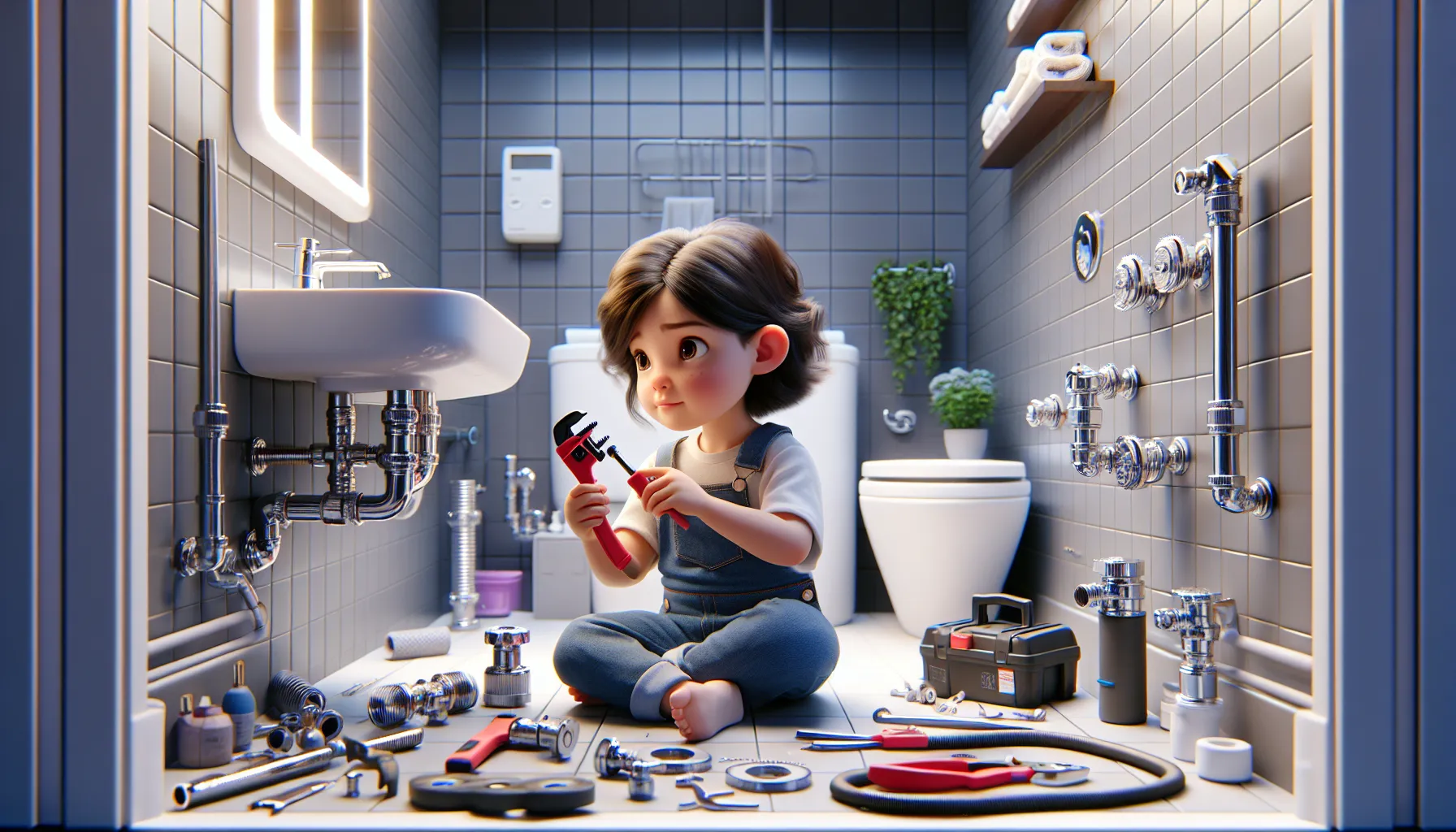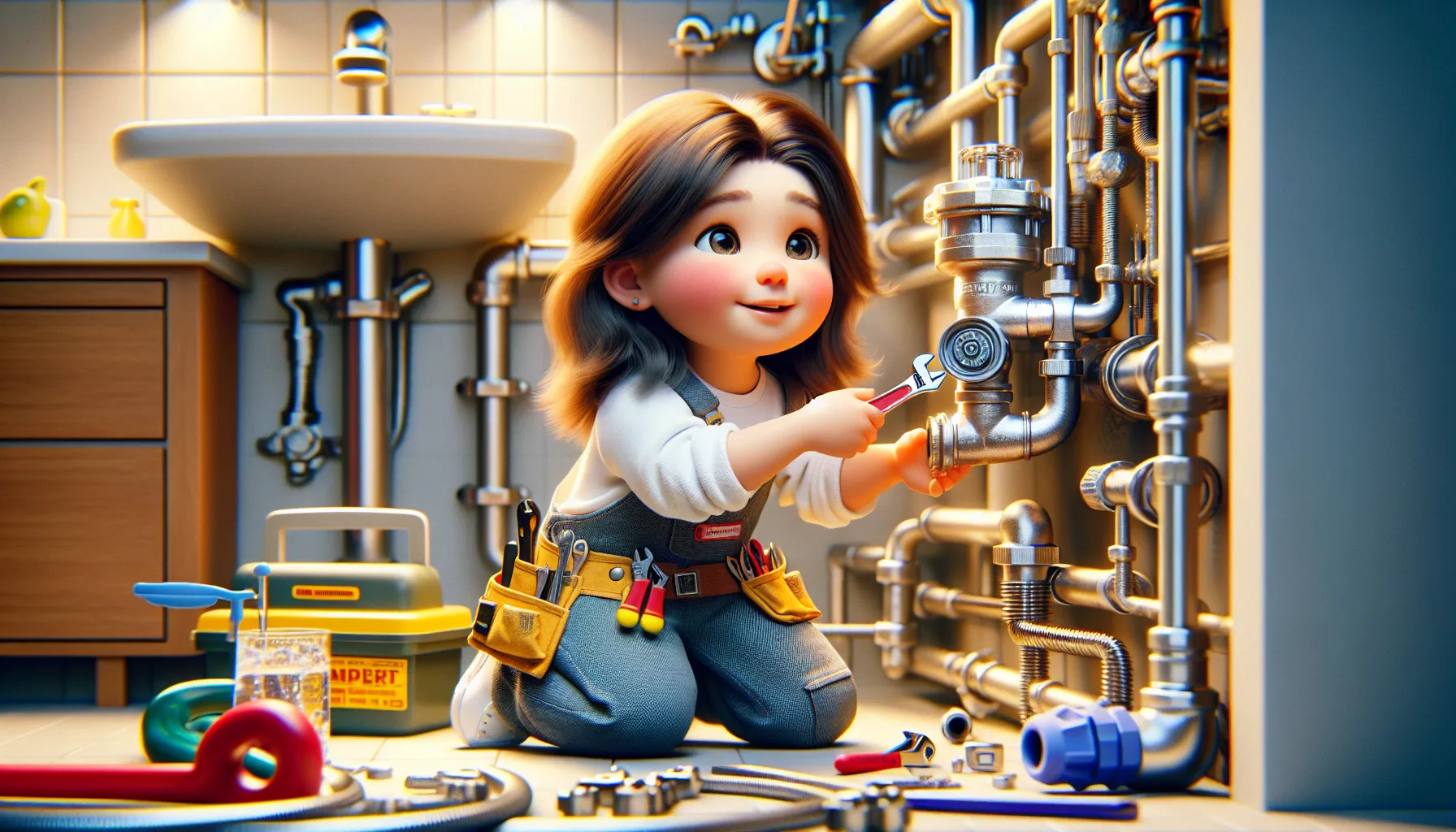Issues with water pressure can be frustrating and inconvenient for homeowners. If you’re experiencing low water pressure in your home, it can make daily tasks like showering and washing dishes a challenge. On the other hand, high water pressure can cause damage to your plumbing system and appliances. To tackle these problems effectively, it’s important to identify the root cause and take appropriate measures.
Key Takeaways:
- Check for leaking or clogged pipes: Inspect pipes for any leaks or blockages that could be affecting water pressure.
- Test pressure-reducing valve: Ensure the pressure-reducing valve is working properly and adjust if necessary.
- Examine water main and shut-off valve: Check for any issues with the water main supply and the shut-off valve that could be impacting water pressure.
- Clean or replace aerators: Clean or replace aerators in faucets and showerheads to improve water flow and pressure.
- Consider installing a water pressure booster: If all else fails, a water pressure booster can help increase water pressure in your home.
Identifying Water Pressure Issues
Initial Assessment and Symptoms
On occasion, homeowners may notice low water pressure in their faucets, showers, or sprinkler systems. Low water pressure can be a frustrating issue that affects daily tasks like showering and washing dishes. It’s important to recognize the signs of potential water pressure problems, such as slow-filling appliances, weak shower spray, or sputtering faucets. These symptoms can indicate underlying issues with your plumbing system that need to be addressed promptly.
Tools and Instruments for Diagnosing Pressure Problems
For accurate diagnosis of water pressure problems, specialized tools and instruments are required. Pressure gauges are commonly used to measure water pressure levels in pipes and identify any inconsistencies. Additionally, flow meters can help determine the flow rate of water in your system, which is important for assessing pressure issues. These tools provide valuable data that can pinpoint the exact source of the problem and guide effective solutions.
Initial assessment and symptoms are crucial steps in identifying water pressure problems, but tools and instruments play a vital role in diagnosing and resolving these issues. Professionals use these specialized tools to gather precise measurements and determine the root cause of pressure fluctuations. By utilizing the right equipment, homeowners and plumbers can effectively address water pressure problems and restore optimal water flow throughout the property.
Common Causes of Low Water Pressure
Now, when troubleshooting low water pressure in your home, it is important to understand the common causes that may be contributing to this issue. By identifying the root cause, you can effectively address the problem and restore adequate water pressure throughout your plumbing system.
Clogged Pipes
An accumulation of mineral deposits, debris, or sediment can lead to clogged pipes, restricting the flow of water and causing low water pressure. This is a common issue in older homes with aging plumbing systems. If you notice a gradual decrease in water pressure, especially in specific areas of your home, clogged pipes may be the culprit.
Faulty Pressure Regulators
With faulty pressure regulators, the mechanism responsible for regulating water pressure within your plumbing system may be malfunctioning. Pressure regulators are designed to maintain a consistent and safe water pressure level, but when they fail, it can result in low water pressure issues. For instance, a malfunctioning pressure regulator may cause spikes in water pressure that can damage your plumbing fixtures and appliances.
Common Causes of High Water Pressure
Municipal Supply Issues
An unexpected increase in water pressure can be alarming. After ruling out any changes made on your property, consider reaching out to your municipal water supplier. An issue with the main water line or a pump malfunction can cause a surge in pressure. Municipalities may also perform maintenance or repairs that inadvertently lead to a spike in water pressure. It is necessary to communicate with your water provider to address any large-scale water pressure issues.
Malfunctioning Valves and Pressure Tanks
Malfunctioning valves or pressure tanks within your plumbing system can also be a common source of high water pressure. These components are designed to regulate and maintain safe water pressure levels in your home. When they fail to function correctly, they can allow pressure to build up to dangerous levels. With prolonged high water pressure, your pipes, fixtures, and appliances may be at risk of damage.
Troubleshooting Specific Scenarios
Low Pressure in Cold Water Lines
Noticing low water pressure in your cold water lines can be frustrating, but there are a few common causes to consider. First, check if the shut-off valve for the cold water is fully open. Next, inspect the aerator on the faucet to see if it is clogged with debris. If these do not resolve the issue, there may be a leak in the pipes or a buildup of sediment that is restricting the flow of water.
High Pressure in Hot Water Systems
Water pressure that is too high in your hot water systems can lead to a range of issues, including leaks, water wastage, and potential damage to appliances. If you notice excessively high pressure, it could be due to a faulty pressure regulator, a closed expansion tank valve, or thermal expansion in the water heater.
Water pressure that is too high can put stress on your plumbing system and appliances, leading to leaks and potential bursts in the pipes. It is important to address high water pressure promptly to avoid costly damage and repairs. Consider installing a pressure relief valve or consulting a professional plumber to adjust the pressure to a safe and optimal level.
Step-by-Step Troubleshooting Procedures
| Checking and Cleaning Aerators and Fixtures | Inspecting and Adjusting Pressure Regulators and Tanks |
ProceduresYour first step in troubleshooting water pressure issues should be to check and clean aerators and fixtures. Sediment and mineral deposits can build up over time, causing a decrease in water flow. Start by unscrewing the aerators at the tip of your faucets and soaking them in vinegar to break down any buildup. Next, inspect the fixtures for any blockages or debris that may be affecting the flow. |
To Inspect and Adjust Pressure Regulators and TanksTo ensure optimal water pressure in your home, it is important to inspect and adjust pressure regulators and tanks. These components regulate the flow of water into your home and can sometimes become faulty or misadjusted. Check the pressure regulator for any signs of damage or corrosion, and adjust the pressure settings accordingly to achieve the desired water pressure. |
Plus, regular maintenance of aerators, fixtures, pressure regulators, and tanks can help prevent water pressure problems in the future. It is imperative to address any issues promptly to avoid potential damage to your plumbing system. Note, proper water pressure is crucial for the efficient functioning of your household appliances and fixtures.
Preventive Maintenance and Long-Term Solutions
Regular Maintenance Schedules for Water Systems
Water systems require regular maintenance to prevent water pressure problems. It is important to schedule routine checks on your water system to ensure that all components are working properly. This includes inspecting pipes for leaks, checking valves for any signs of wear, and testing pressure regulators. By maintaining a regular maintenance schedule, you can prevent unexpected water pressure issues and extend the lifespan of your system.
Upgrading and Replacing Outdated Plumbing
With time, plumbing systems can become outdated and less efficient, leading to water pressure problems. Upgrading and replacing outdated plumbing components can improve water flow and increase water pressure in your home. This may involve replacing old pipes with newer, corrosion-resistant materials or installing water-saving fixtures. By investing in upgrades and replacements, you can ensure that your plumbing system functions optimally and avoid water pressure issues in the long run.
Final Words
Following this troubleshooting guide for common water pressure problems will help you identify and solve issues that may be affecting the water pressure in your home. By systematically checking and addressing potential causes such as clogs, leaks, or faulty pressure regulators, you can ensure that your plumbing system functions properly and efficiently.
Remember that if you encounter more complex issues or if the troubleshooting tips provided do not solve the problem, it is always best to consult with a professional plumber. Maintaining good water pressure is crucial for the performance of your plumbing fixtures and appliances, so regular checks and timely repairs will help prevent larger, more costly issues in the future.
FAQ
Q: What are common water pressure problems in a residential setting?
A: Common water pressure problems in a residential setting include low water pressure, water hammer, fluctuating water pressure, and reduced flow rate.
Q: What causes low water pressure in a home?
A: Low water pressure in a home can be caused by issues such as clogged pipes, mineral build-up in pipes, a faulty pressure regulator, or a water leak.
Q: How can I troubleshoot low water pressure in my home?
A: To troubleshoot low water pressure, check for any visible leaks, inspect the pressure regulator, clean faucet aerators, flush the water heater, and ensure that all shut-off valves are fully open.
Q: What is water hammer and how can it be resolved?
A: Water hammer is a common plumbing issue characterized by loud banging noises in pipes. It can be resolved by installing water hammer arrestors, securing loose pipes, or adjusting the water pressure.
Q: How can I prevent water pressure problems in the future?
A: To prevent water pressure problems, regularly inspect and maintain your plumbing system, avoid using harsh chemicals that can corrode pipes, and consider installing a water pressure regulator if needed.


